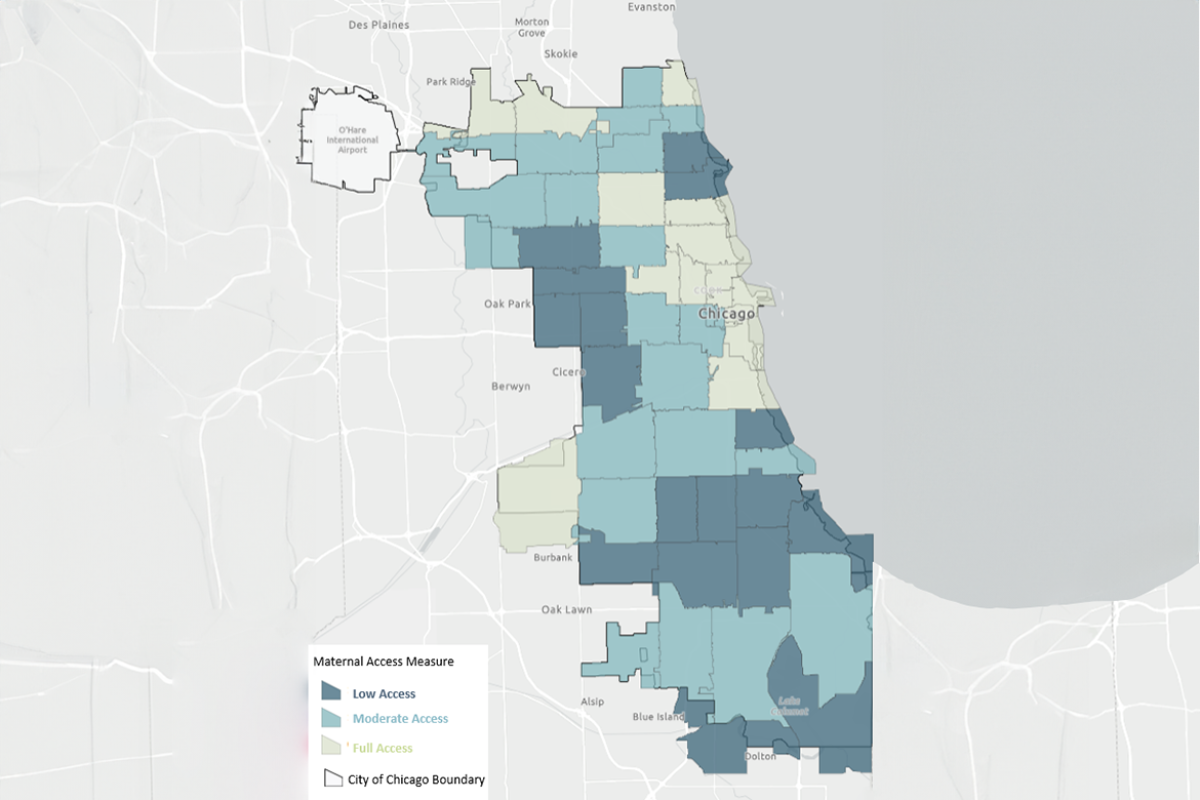Overview
Despite overall progress in medical science and technology, the landscape of maternal health in the U.S. is marked by both accomplishments and persistent challenges. In recent years, the U.S. has witnessed a mounting awareness of maternal health inequities, unveiling a complex interplay of socio-economic, racial and health care system factors.
More than two million individuals of childbearing age live in “maternity care deserts,” without access to birthing facilities or maternal care physicians and providers. Building on the findings from the March of Dimes’ Nowhere to Go: Maternity Care Deserts Across the US 2022 report (PDF), this new study from the American Medical Association (AMA) and Sinai Urban Health Institute examines the variations in access to maternal health care and maternal and infant health outcomes across specific neighborhoods in Chicago, Illinois.
Key findings
- Low maternal care access designation is concentrated in areas of the city that are home to the majority of Black residents.
- Closure of OB/GYN units occurred on the south side of Chicago, leaving zip codes with the majority of Black residents with lower access to care throughout their pregnancies.
- Rates of inadequate pre-natal care are also highly concentrated in areas of the city home to majority Black residents and are in areas of the city where very few physicians are registered at practice locations.
- The culmination of these factors shows that many variables impact the health of vulnerable populations throughout their pregnancies.
- Inequity in locations of health care facilities and physicians, closures of OB/GYN units, and distribution of social hardships lead to poor outcomes during pregnancy, being over-represented among minority populations.
- There are many ways in which access could be increased for these populations, including:
- Usage of telehealth for pregnancy care to bridge the gap between in-person appointments
- Garnering support from community partners, foundations and payers
- Diversifying the maternal health care workforce and building community trust
Read more (PDF) about the impact of obstetric and gynecological facility and services closures on maternal health within the city of Chicago.
Explore other AMA resources on maternal health
Learn more about AMA's efforts to improve maternal health.







